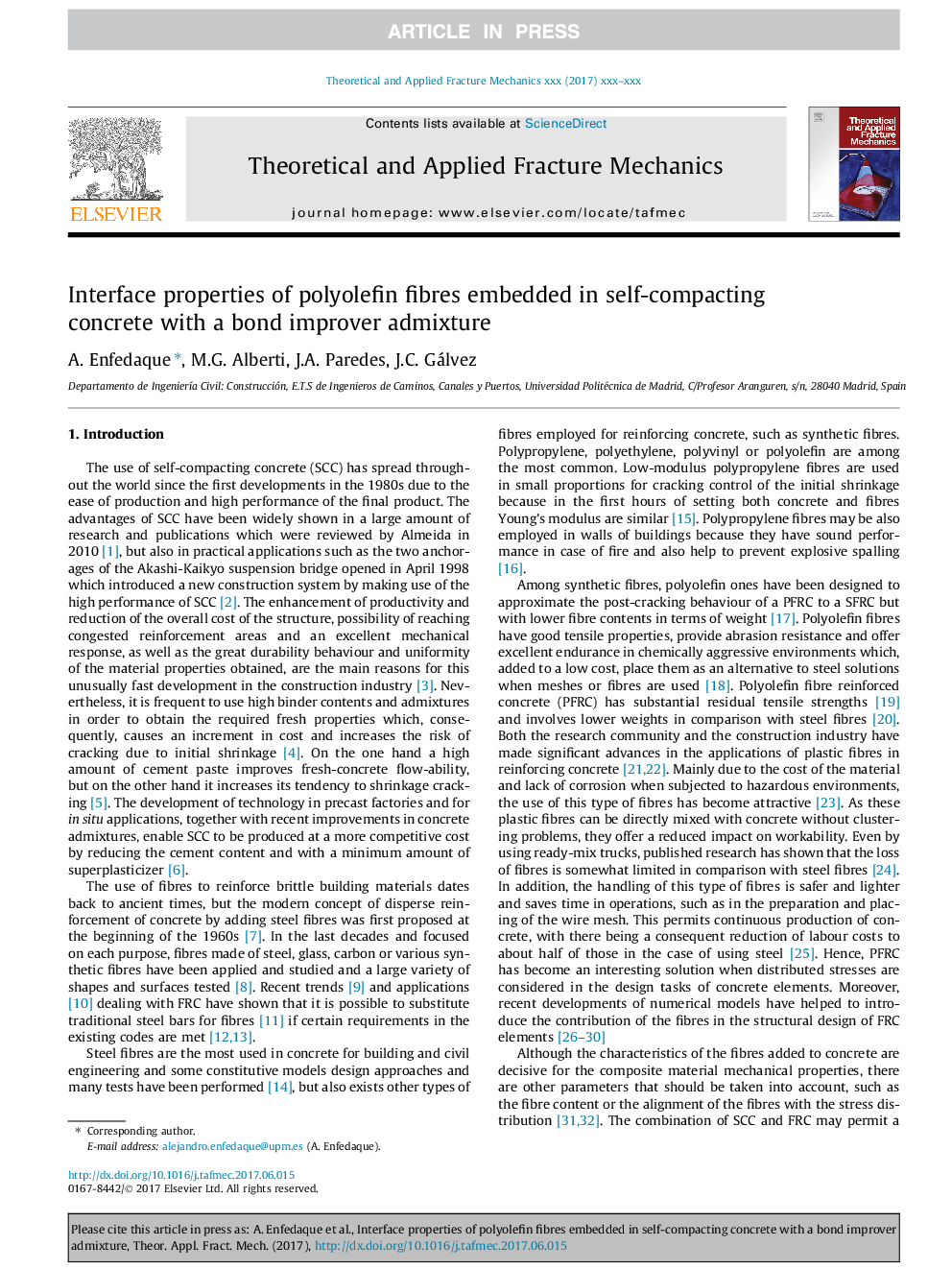| Article ID | Journal | Published Year | Pages | File Type |
|---|---|---|---|---|
| 5019758 | Theoretical and Applied Fracture Mechanics | 2017 | 7 Pages |
Abstract
The use of polyolefin fibres to reinforce concrete has become an alternative to steel fibres. In order to enhance the properties that the polyolefin fibres provide, some chemical additives are being tested nowadays. One of them is a bond improver admixture which seeks to increase the interfacial properties of the fibre-matrix interface. Following this rationale, this study pursues to determine the influence of the bond improver on the mechanical properties of self-compacting concrete with 10Â kg/m3 of polyolefin fibres. Flexural tensile fracture tests on notched specimens showed that the strength at the limit of proportionality (fLOP) was remarkably similar in specimens with and without additive. Nevertheless, the specimens with bond improver increased 35% the minimum post-cracking strength after the first unloading in such three point bending test. Similarly, the maximum post peak strength improved 40% in the specimens with bond improver. With the aim of explaining the variations of behaviour, a comparison using a scanning electronic microscopy (SEM) of the fibre-matrix interfaces was carried out in both concrete. It was found that the improved adhesion, when using the bond improver seems, to be caused by the decrease of air voids at the fibre-matrix interface.
Related Topics
Physical Sciences and Engineering
Engineering
Mechanical Engineering
Authors
A. Enfedaque, M.G. Alberti, J.A. Paredes, J.C. Gálvez,
